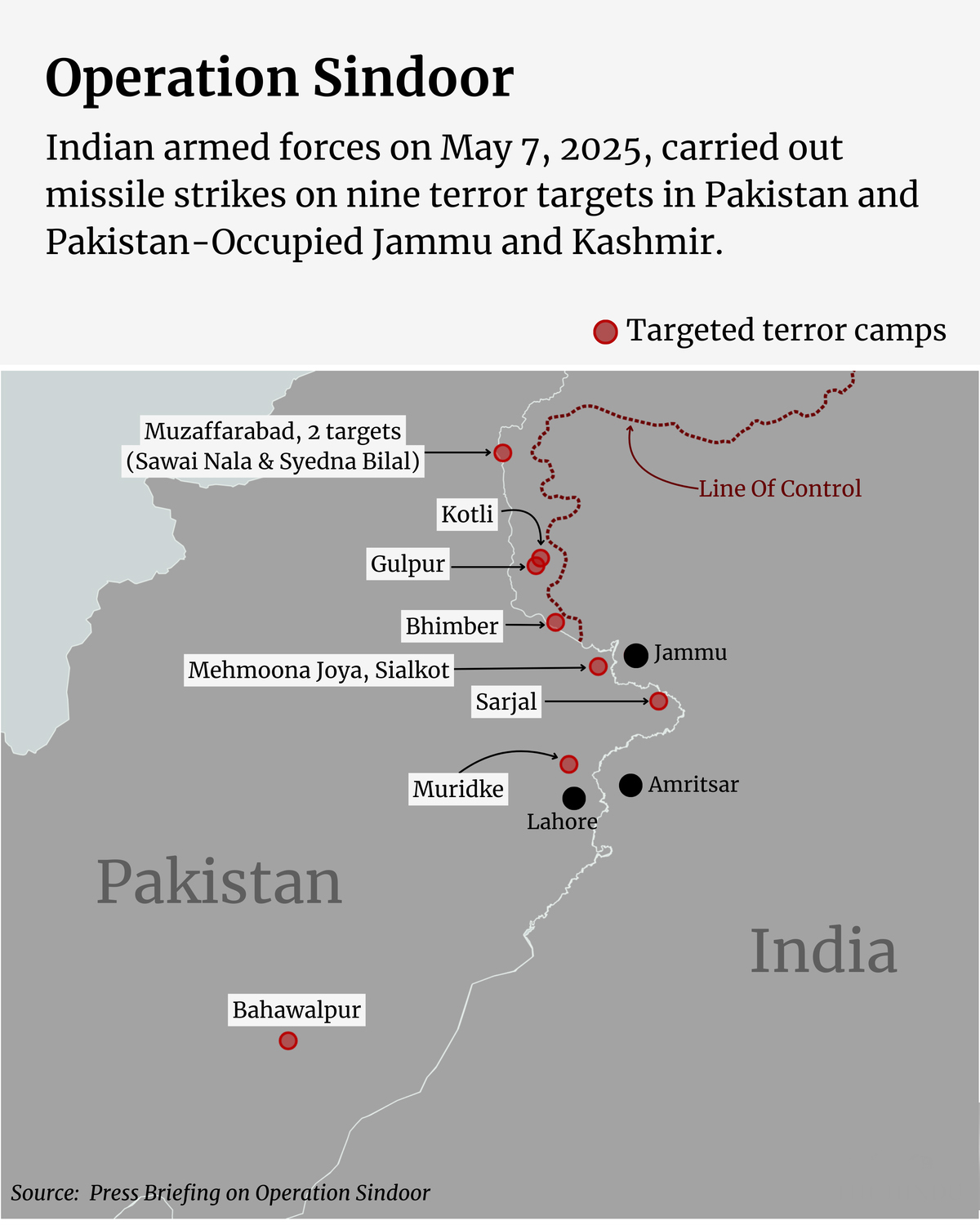Context:
India launched Operation Sindoor on May 7, 2025, targeting nine terror-linked sites across Pakistan and PoK in its most extensive counter-terror strike since Balakot (2019) and Uri (2016).
Targeted Locations:
- Bahawalpur (Pakistan Punjab): Known as the ideological and operational base of Jaish-e-Mohammed (JeM), this city has long been a focal point of terror logistics. It is the hometown of Maulana Masood Azhar, the group's founder, who was released by India in exchange for the hostages of Indian Airlines Flight IC-814 hijacked in 1999. Bahawalpur also has symbolic relevance due to its historical association with Pakistan’s former military dictator Zia-ul-Haq, who died in a mysterious plane crash there in 1988.
- Muridke (near Lahore, Pakistan Punjab): Headquarters of the Lashkar-e-Taiba (LeT), the group responsible for the 26/11 Mumbai terror attacks. The town hosts the Markaz-e-Taiba, a religious and military complex that trains and indoctrinates militants.
- Muzaffarabad (Capital of PoK): A known staging ground for terror infiltration into Jammu & Kashmir. It houses several terror groups supported logistically by the Pakistan Army, particularly for cross-LoC operations. It lies close to India’s Baramulla and Kupwara districts.
- Kotli (PoK): Situated near the LoC, opposite India’s Jammu region, Kotli has long been suspected of harbouring launch pads and militant camps. It is strategically located between Poonch and Rajouri, both sensitive sectors in Jammu & Kashmir.
Political and Diplomatic Undertones
The operation was preceded by diplomatic outreach, signalling India’s intent to international stakeholders and reaffirming its right to self-defence under Article 51 of the UN Charter. The operation was also strategically named “Sindoor”, possibly referencing the religious targeting of individuals in Pahalgam, which catalyzed this phase of retaliation. The naming underscores the moral and civilisational undertone often embedded in Indian strategic communications.
Following the attack, the Ministry of Defence issued a statement calling the action “focused, measured, and non-escalatory.” This language aligns with India’s longstanding emphasis on responsible use of force, especially in contrast to Pakistan’s use of proxy actors for plausible deniability.
Implications for Regional Security
India’s recent cross-border operations must be viewed within the continuum of its shift from a traditionally defensive posture to one of assertive retaliation against cross-border terrorism. The 2016 surgical strikes targeted launch pads across the Line of Control (LoC) in PoK following the killing of Indian soldiers in Uri. The 2019 Balakot airstrikes were a response to the Pulwama terror attack and marked India’s first use of air power across the LoC since 1971.
Operation Sindoor adds a new layer to India’s strategic doctrine: a move from isolated retaliatory strikes to systematic neutralisation of terror infrastructure across multiple sites. This operation highlights the shift toward a deterrence-based model, where India communicates not only capability but also political resolve to strike with precision, even in densely populated or diplomatically sensitive regions.
In doing so, India seeks to:
- Undermine the operational depth of terror networks,
- Disrupt their recruitment and training pipelines,
- And impose reputational and strategic costs on their state sponsors.
Conclusion
Operation Sindoor marks a pivotal moment in India’s counter-terrorism approach, combining intelligence-based targeting, diplomatic groundwork, and technologically sophisticated execution. As regional dynamics continue to evolve, such operations may become a core component of India’s response framework, reflecting a more assertive, integrated national security doctrine.







